Malls, Memory, and Mala
A Helsinki Dérive, Part Three
The Metro ride from Kamppi to Itäkeskus takes less than twenty minutes, but it’s long enough to feel yourself being pulled into suburbia. We navigate our way out of the subway station, more by random luck than any smartphone guidance, and eventually I'm seated in Easton, a shopping mall that seems less a destination than a supply depot, anchored by the gravitational core of a 24-hour K Citymarket.
On a gray Friday morning, the crowd is largely pensioners drifting through the atrium, while two Helsingin Sanomat kids attempt to sell subscriptions. In twenty minutes, they’ve managed to chat up four people, all of them gray-haired, and they’re still gamely trying for a fifth. With Nancy perusing the Red Cross thrift shop and coffee being conspicuously absent, I camp out on a bench and watch the choreography of retail in its prelude state.
Across the motorway rises Itis, the cathedral sibling, its atriums wider and brighter, its upper levels hosting restaurants that range from chain familiar to global oddity. Together, Easton and Itis orbit like binary stars: one functional, one aspirational. Propelled by the need for caffeine, I make my way through stairs, escalators, and a walkway into Itis's kauppahalli. I seem to be consistently finding myself at these.
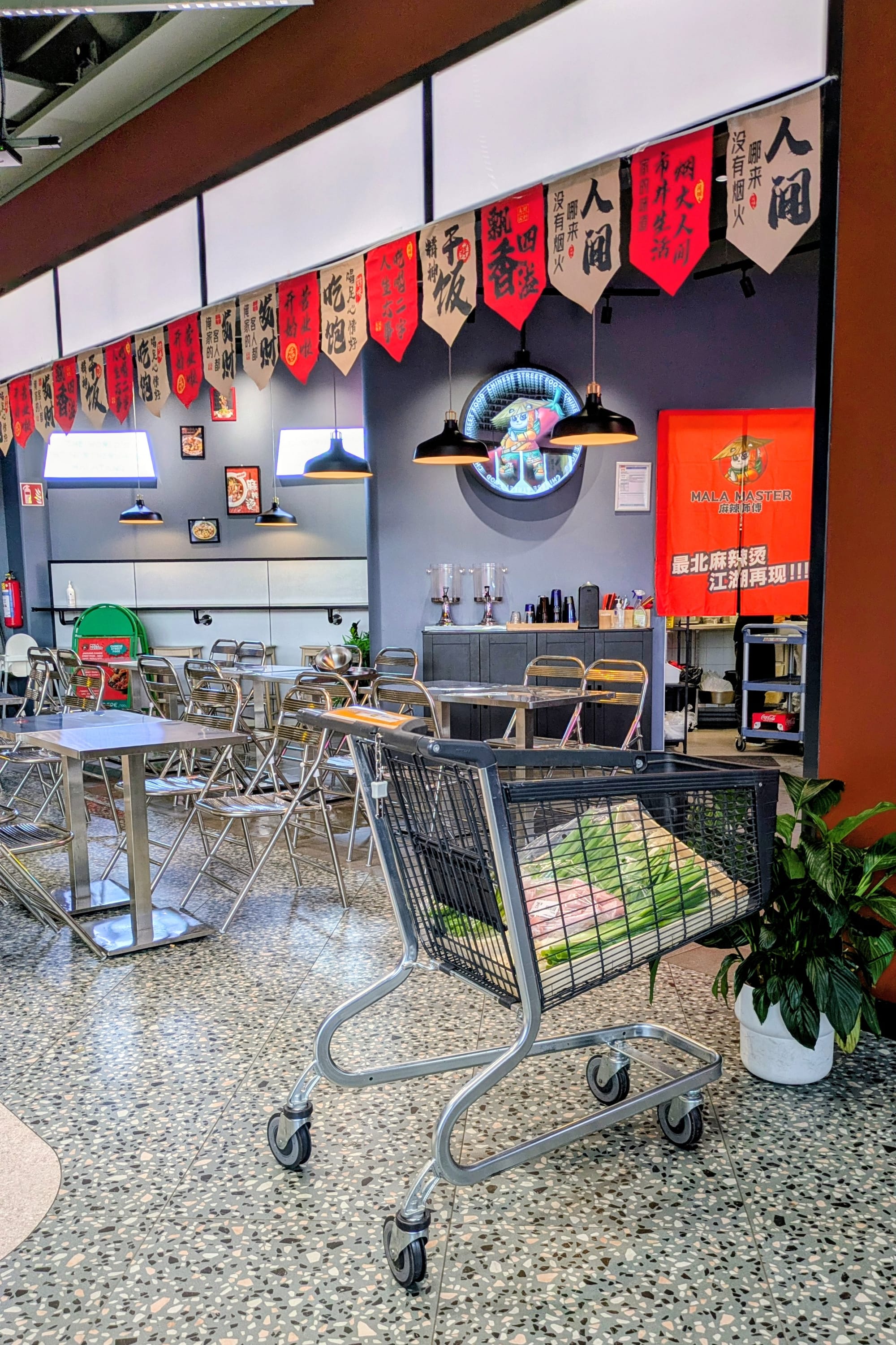
The food court announces itself with that "eau de fry oil" as I meander past three particular stalls. Mala Master proclaims itself the world’s northernmost malatang, a boast backed by banners and pennants that flutter over a shopping cart full of scallions and shrink-wrapped meats—the day’s supply of broth fodder, logistics laid bare beneath the spectacle. A stall away, Seksisco Tacos leans into parody with a neon mascot taco in a cowboy hat giving customers the middle finger, doubled down by signage that reads like an edgelord dare. Next door, a mochi stand prepares to open for business, a woman in hijab quietly arranging her trays of confections. Together they form a triptych: theatrical, provocative, and patient.
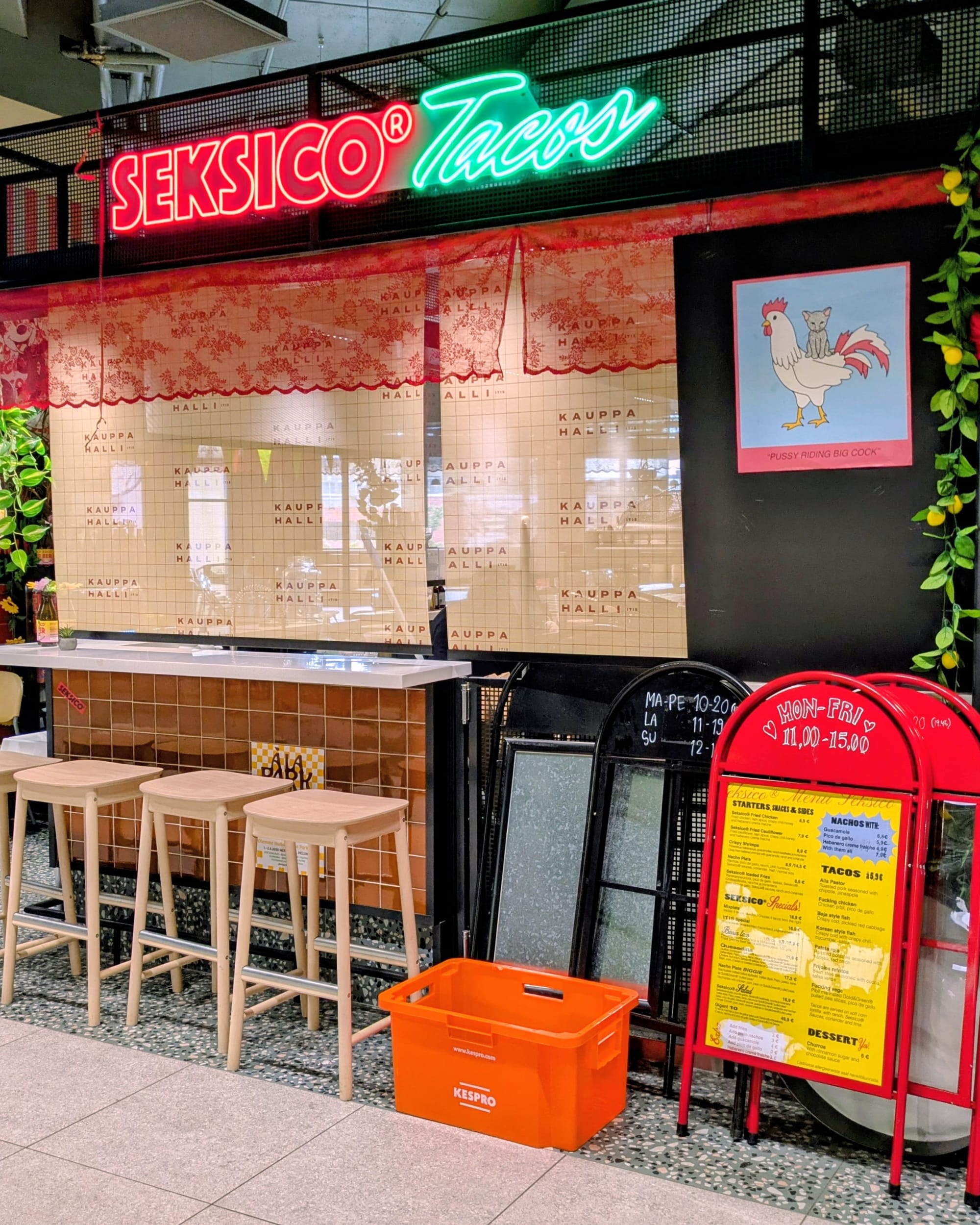
Then there is also Puhos, a third body in the system, orbiting a little further out. Where Itis trumpets global franchises and Easton hums with Citymarket gravity, Puhos feels like the stepchild that slipped its orbit. Its façade is weathered concrete and faded signage, its tenants a collection of diaspora groceries, thrift shops, furniture outlets, and immigrant eateries: Alanya, Newroz, Diwan. It is neither cathedral or warehouse but dwarf star—diminished in relative scale yet persistent, glowing faintly with a different kind of energy. Puhos thrives in dogged adaptation, serving the communities overlooked by its brighter neighbors.
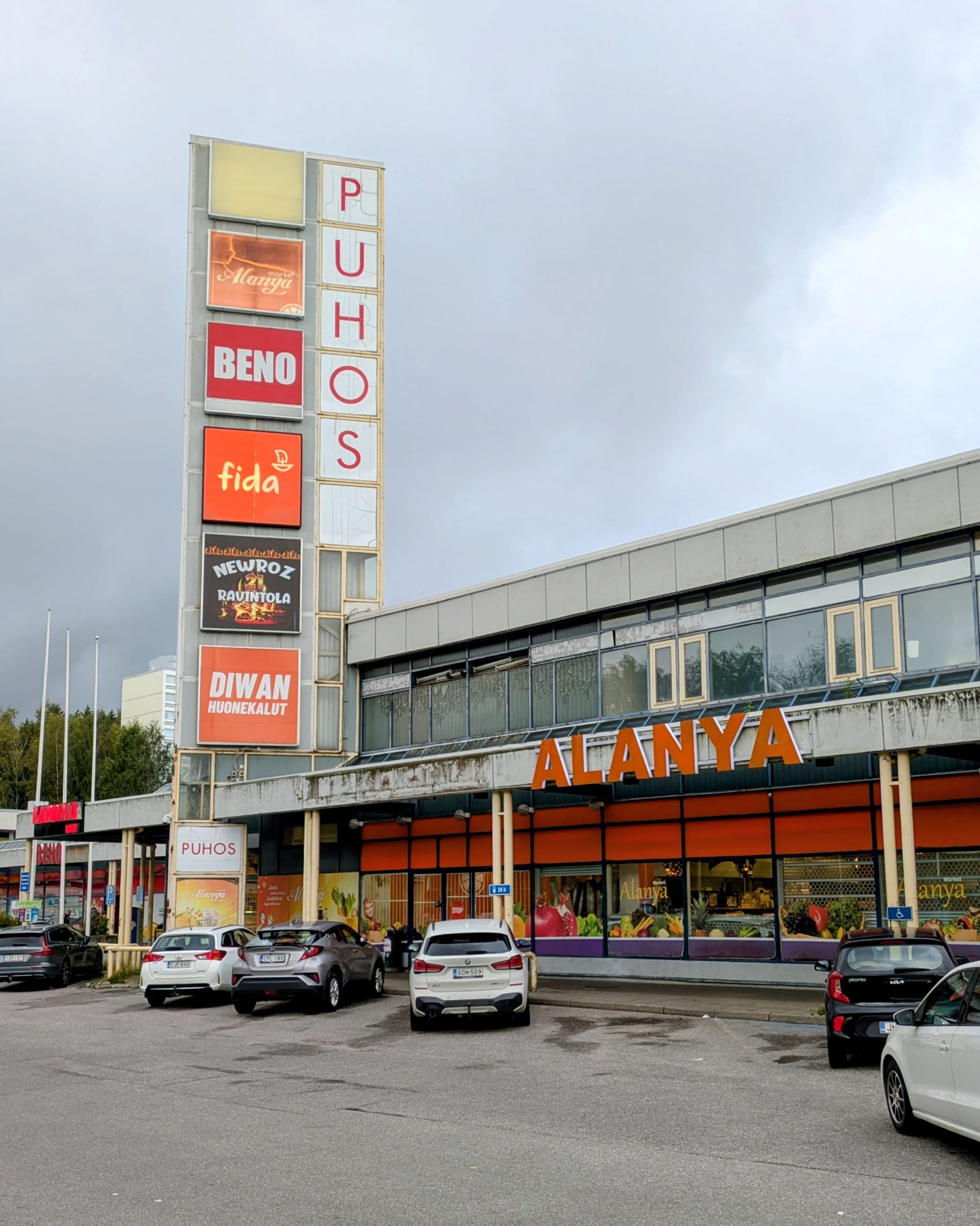
That’s why Helsinki’s malls resonate with Houston and Portland in my memory. Memorial City was my childhood anchor, the baseline of suburban mall culture. Town & Country occupies a stranger place in memory: not for its shops but for the surreal day the Bangles played at the grand opening of Beltway 8, the crowd swaying with the toll road beneath them. The Galleria was the aspirational pinnacle, its skating rink and luxury storefronts a performance of cosmopolitanism. In Portland, Lloyd Center has become a husk, its anchor stores gone, but doggedly persisting with a new growth of tiny, independent shops.
So wandering in Easton, Itis, or Puhos isn’t just Helsinki—it’s Houston in adolescence and Portland after decline, layered into the present. These malls are not just places to shop; they are time machines, collapsing decades and continents into the same tiled floor.
As I exit the food court, I find myself between two sentries: Fazer Café on one side, McDonald’s on the other. Scylla and Charybdis, continuity and conformity, heritage and standardization. I steer toward Fazer, order a korvapuusti and coffee, and let the cardamom and caffeine ground me at last. After the fry oil and boastful malatang, after scallions in a cart and rude tacos, after memories of Houston and glimpses of Portland, this small act of sitting with coffee feels like being able to drop anchor and catalog the dérive.
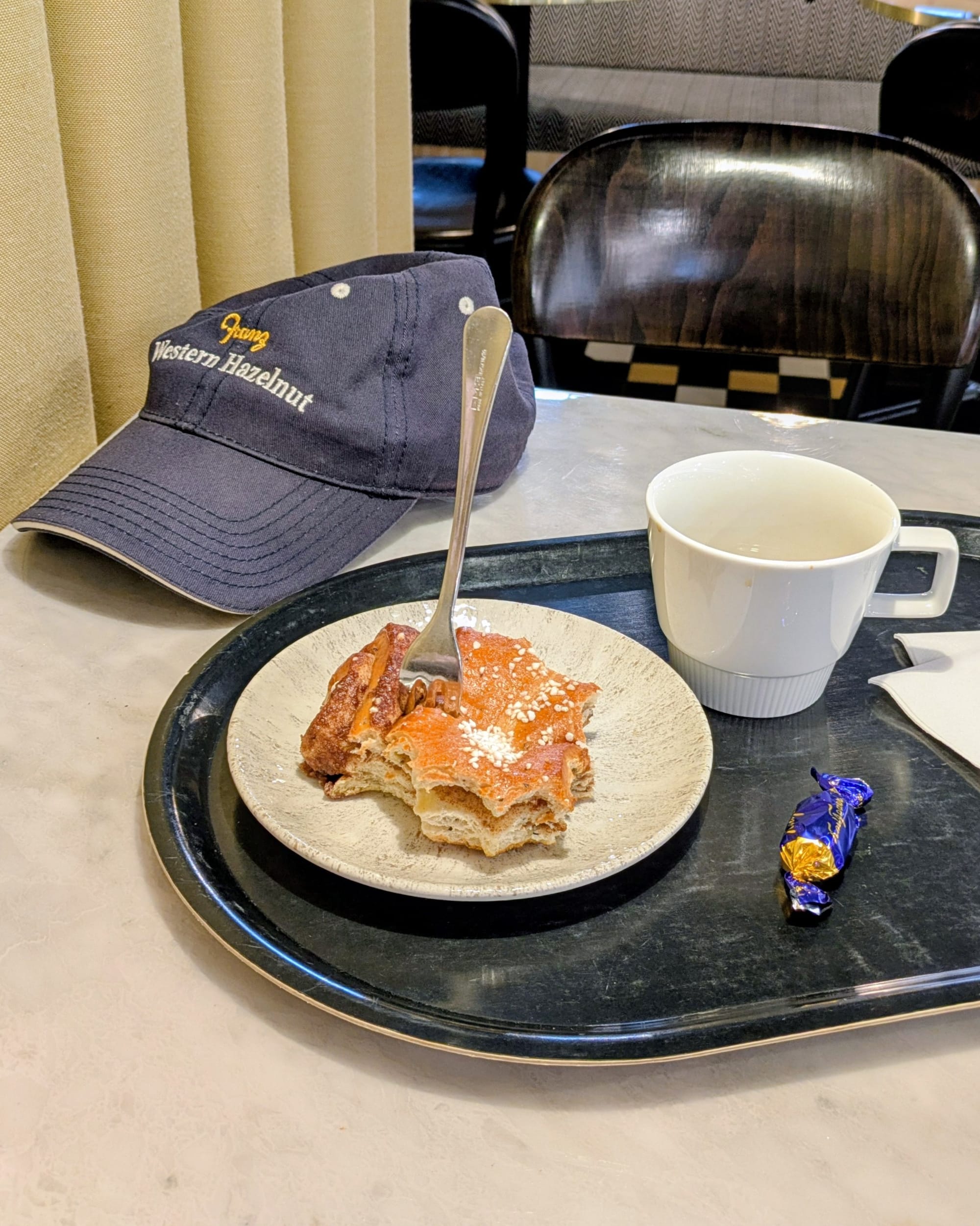
Nancy eventually finds me with my demolished pastry (and this essay in progress), gets her own pulla and coffee, and brings me up to speed on the small treasures she's found. I'll walk with her to Puhos where she'll dig into the racks of the Fida second hand shop, and I'll head back to the Airbnb. Psychogeographic drift may not be the most obvious vacation activity, but it's been an oddly rewarding way of absorbing a place.
Coda: The Double Mala
Later, near our Airbnb, I round a corner and there it is: another Mala Master, identical signage, same posters, same promises of spice and spectacle. The “northernmost malatang” suddenly looks less like a singular boast and more like a franchise flex. What I thought was an oddity in Itis turns out to be a pattern—one location in a constellation of its own.
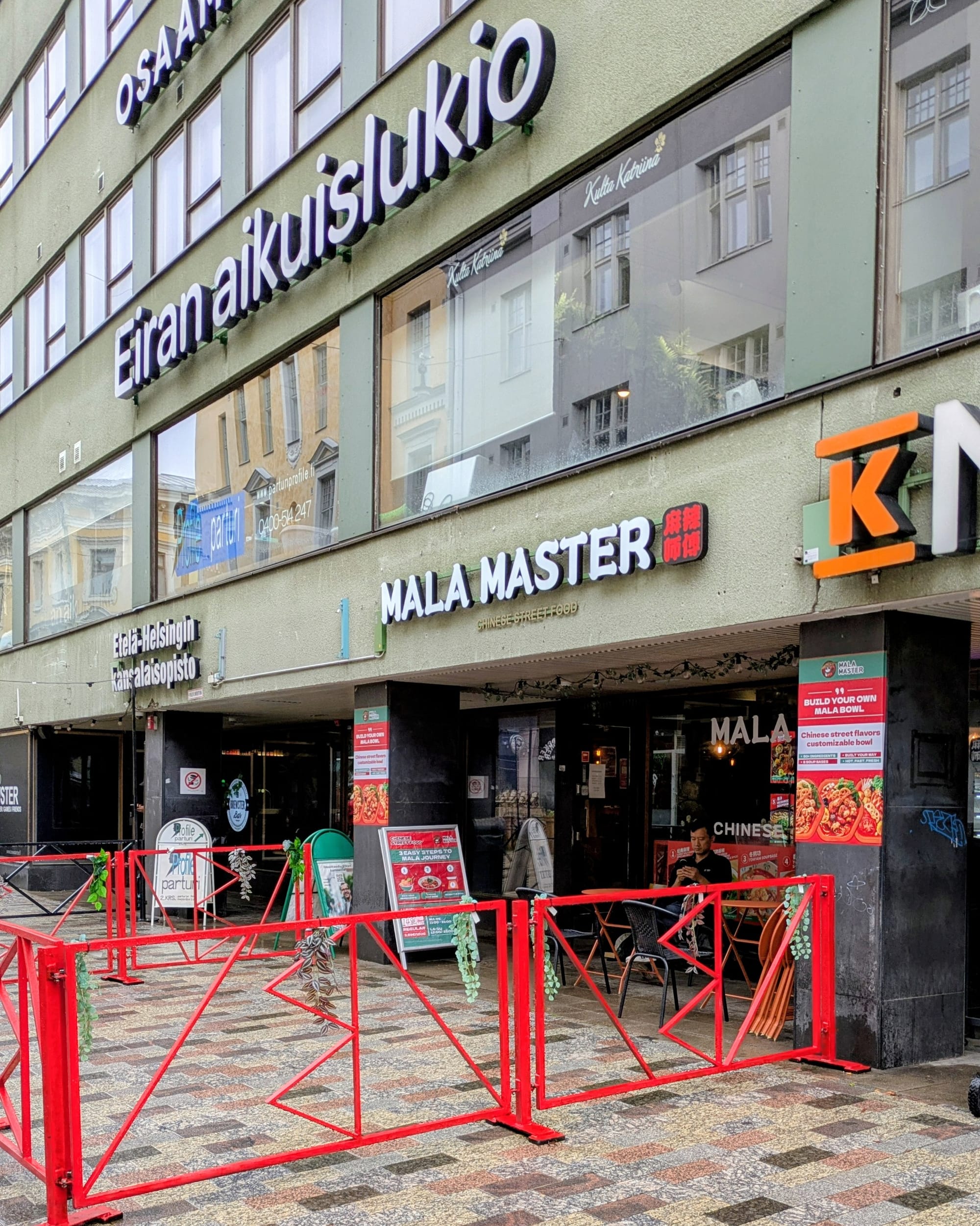
But that’s how cities speak: not in singular moments but in repetitions. The dérive delivers déjà vu. Mala Master appears twice, once in the cathedral glare of Itis, once tucked into the ordinary streetscape of my temporary neighborhood. And so the boast, the cart of scallions, the banners—all of it collapses into recognition. Haunting, but not quite haunted.